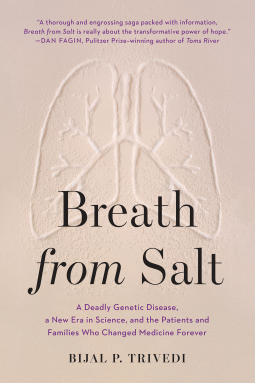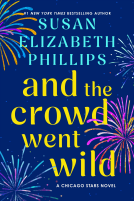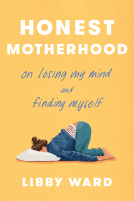
Breath from Salt
A Deadly Genetic Disease, a New Era in Science, and the Patients and Families Who Changed Medicine Forever
by Bijal P. Trivedi
This title was previously available on NetGalley and is now archived.
Send NetGalley books directly to your Kindle or Kindle app
1
To read on a Kindle or Kindle app, please add kindle@netgalley.com as an approved email address to receive files in your Amazon account. Click here for step-by-step instructions.
2
Also find your Kindle email address within your Amazon account, and enter it here.
Pub Date Sep 08 2020 | Archive Date Nov 02 2020
Talking about this book? Use #BreathfromSalt #NetGalley. More hashtag tips!
Description
"Elaborating on the science as well as the business behind the fight against cystic fibrosis, Trivedi captures the emotions of the families, doctors, and scientists involved in the clinical trials and their 'weeping with joy' as new drugs are approved, and shows how cystic fibrosis, once a 'death sentence,' became, for many, a manageable condition. This is a rewarding and challenging work."
—Publishers Weekly
Cystic fibrosis was once a mysterious disease that killed infants and children. Now it could be the key to healing millions with genetic diseases of every type—from Alzheimer's and Parkinson's to diabetes and sickle cell anemia.
In 1974, Joey O'Donnell was born with strange symptoms. His insatiable appetite, incessant vomiting, and a relentless cough—which shook his tiny, fragile body and made it difficult to draw breath—confounded doctors and caused his parents agonizing, sleepless nights. After six sickly months, his salty skin provided the critical clue: he was one of thousands of Americans with cystic fibrosis, an inherited lung disorder that would most likely kill him before his first birthday.
The gene and mutation responsible for CF were found in 1989—discoveries that promised to lead to a cure for kids like Joey. But treatments unexpectedly failed and CF was deemed incurable. It was only after the Cystic Fibrosis Foundation, a grassroots organization founded by parents, formed an unprecedented partnership with a fledgling biotech company that transformative leaps in drug development were harnessed to produce groundbreaking new treatments: pills that could fix the crippled protein at the root of this deadly disease.
From science writer Bijal P. Trivedi, Breath from Salt chronicles the riveting saga of cystic fibrosis, from its ancient origins to its identification in the dank autopsy room of a hospital basement, and from the CF gene's celebrated status as one of the first human disease genes ever discovered to the groundbreaking targeted genetic therapies that now promise to cure it.
Told from the perspectives of the patients, families, physicians, scientists, and philanthropists fighting on the front lines, Breath from Salt is a remarkable story of unlikely scientific and medical firsts, of setbacks and successes, and of people who refused to give up hope—and a fascinating peek into the future of genetics and medicine.
Advance Praise
"Elaborating on the science as well as the business behind the fight against cystic fibrosis, Trivedi captures the emotions of the families, doctors, and scientists involved in the clinical trials and their 'weeping with joy' as new drugs are approved, and shows how cystic fibrosis, once a 'death sentence,' became, for many, a manageable condition. This is a rewarding and challenging work."
—Publishers Weekly
Available Editions
| EDITION | Other Format |
| ISBN | 9781948836371 |
| PRICE | $28.95 (USD) |
| PAGES | 400 |
Links
Average rating from 18 members
Featured Reviews
A poignant account of Cystic Fibrosis and stories of what people encountered and research made to discover this disease and get us where we are today. I especially loved the stories of real people. It hit home with me because my aunt had a double lung transplant because of bronchiectasis, which is mentioned in the book and I had never heard of until my aunt’s issues. One of my friends in school had Cystic Fibrosis and is now very successful in her life, but I unfortunately didn’t know much about it and things like that weren’t really talked about back then. Deeply touching and moving story about this disease for anyone who is interesting in learning new things even if you don’t personally know someone affected. I learned a lot about research, science, and even medical organizations as well as stories about real people and real families. Highly recommended. Great writing. I couldn’t put it down.
I have read an advanced copy of Breath from Salt, by Bijal P. Trivedi. Breath of salt is about the disease Cystic Fibrosis. I have read alot of books about CF, over the years. This book is a great informative book about the disease through the years, progress, new meds, real patient stories. A very engaging medical book about CF.
 Marjolein E, Reviewer
Marjolein E, Reviewer
As a PhD researcher working on Cystic Fibrosis I immediately knew I had to get this ARC and read Breath from Salt, which will be published tomorrow on September 8, the 31st anniversary of the publication of the CFTR gene, mutations in which cause Cystic Fibrosis. I wanted to read it to get more background and personal stories, and I am also looking for accessible ways in which to introduce my thesis subject to my friends and family.
Breath from Salt aims to tell the story of Cystic Fibrosis from the early days before it was recognized, over the helpless days where the diagnosis was a (very) early death sentence, to the currently hopeful days where CF specific drugs that can restore the faulty protein have started to reach the market. This is the story of nothing short of a revolution – where Cystic Fibrosis helped to make sure that rare diseases (CF itself is considered the most common of the rare diseases) get the research and resources that are needed, and then again at the forefront of the treatment revolution that is called personalized medicine.
However, I suggest Breath from Salt should be re-titled An American History of Cystic Fibrosis.
The beginning was great! I was rather excited to be reading this, so I probably bothered a lot of people with my constant status updates. While I knew the main parts of story here, they are usually only summarized in review papers like “Dr. Dorothy Andersen was the first to describe CF in 1938…”. Breath from Salt however was adding the personal touch and anecdotes to these early discoveries that was exactly what I was hoping to find. Interspersed was the touching story of a family struggling with CF in a time there were so little options. Sad as it was to read about it, it also highlighted how far we have come from those days.
Next up, there was a lot of basic science to discover. After being able to recognize and diagnose Cystic Fibrosis, the next question was: what is going wrong in Cystic Fibrosis? This is essential to know in order to figure out how to fight the disease. Its clustering in families made clear there had to be a genetic cause, the salty sweat (people with CF taste salty) pointed towards a defect in salt transport. The unraveling of how (which part of the DNA was mutated) and what (which functions where the cells missing because of it) was super interesting to read for me. All of this is science that was performed before I was born, let alone read about CF, and it was great to see it all together in one place.
The gene hunt culminates with the discovery of the CFTR gene which was published on September 8, 1989 in three papers in Science. From there on the focus is on remedies for the disease. And after a very short stint into gene therapy the focus becomes the collaboration of the Cystic Fibrosis Foundation and Aurora (later: Vertex) in the search for so-called CFTR modulators, which would restore the faulty CFTR protein. The story of the CFF was interwoven throughout the earlier parts as well, showing how it became a large and successful patient organization which had the means to hire a company to start working on Cystic Fibrosis (and not for example cancer or diabetes or any other much more common diseases).
This was the part I knew best already – since it was all more recent. It was interesting to read how these molecules which I work with on a daily base (VX-770; VX-809/661; VX-445) came to be. However, I was a little bit disappointed because it no longer focused on other scientific discoveries besides the Vertex development of CFTR modulators. One of the amazing things in the first parts was how it showed that science is a group effort. Discoveries are made because groups at different labs work together and build onto the results from one another to find the gene, discover the protein, and what the mutations do to disrupt it. There was very little non-Vertex related science in the latter part of the book. There is a very short mention that CFF funds some other pharmaceutical companies as well, but that is about it. I suggest this website if you are interested in all ongoing clinical trials into new treatments: https://www.cff.org/Trials/pipeline
Which brings me to my suggested title. There is little to no mention of Europe. Cystic Fibrosis is at least as common in Europe as it is in Northern America, and based on reading this book one might suggest there is no research at all across the pond. As a European-based CF researcher I found this a little unfair. Especially near the end when rare mutations (CF can be caused by different mutations, some of them are only found in a handful of people with CF, and there are no medicines yet for these mutations) are discussed I feel the European effort should have been acknowledged.
Because it does mention how CFF are engineering rare mutations in their models, and Vertex’ All in For CF Program, but it doesn’t talk for example about HIT-CF (https://www.hitcf.org/) the large ongoing European project with teams from the Netherlands, Belgium and Portugal where new drugs from multiple companies are tested directly on cells derived from people with these rare mutations. It doesn’t discuss the human intestinal organoid model (stem cells taken from a small, minimally invasive biopsy and then grown in a petridish where they form some kind of a mini-organ), which correlates very well with clinical data from people with CF. And since it is a minimally invasive procedure these are available from many, many patients and really allow to perform personalized medicine. (You can find the original paper describing the assay over here: https://www.nature.com/articles/nm.3201) 500+ pages and the only reference to organoids at all (it was lung organoids in this case) was to say that some researcher in the Netherlands (not mentioned by name) received some funding to study a certain type of mutation.
Since a picture says more than a thousand words and this assay is something I also perform, I wanted to show you an example. The organoids in this are the small roundish green objects, they are stimulated at the beginning in order to try to open the CFTR channels. If it works it will result in a swelling of the organoids. Below is one sample without any treatment – no swelling; and with treatment with CFTR modulators described in Breath from Salt. You can see for yourself what happens 😊
These things obviously only bothered me because I already knew a lot about the subject (and I am from Europe). As an introduction I think it would work really well, not just into Cystic Fibrosis but also into the ideas and challenges of personalized medicine. Or for anyone who likes to read science books. For me, the recap of all the ‘old’ science was great, and I wouldn’t have minded if the focus had remained more on the science part rather than the business part after the discovery of the gene. I found it rather readable and accessible, but I can’t really vouch for people unfamiliar with many of the scientific terms used.
I would certainly recommend Breath of Salt – just keep in mind that while it covers a lot already, there is still a lot more going on.
Thanks to the publisher and Netgalley for providing me with a free electronic copy of this book in exchange for an honest review!
 Annette J, Reviewer
Annette J, Reviewer
Breath from Salt by Bijal Trivedi is an account of how science, medicine, technology and charity came together to try to conquer a disease with a diagnosis that was a death sentence, Cystic Fibrosis.
As someone whose work involves people with CF I have been fortunate enough to see the life changing differences made by new treatments developed over the last fifteen years and I knew that I needed to read this book immediately. Though I knew about the causes of CF and the various medicines and treatments that are used by patients, I still found myself being surprised and informed by the book. I was shocked to learn that the first description of CF as a specific disease was in 1938, less than a century ago, and though I knew it once had a high infant mortality rate, I was heartbroken by some of the accounts in the book of families who watched their children die one after another, without knowing the cause. As someone who works in the pharmaceutical sector I found it inspiring to see how partnerships between a charitable organisation, the Cystic Fibrosis Foundation, and various pharmaceutical companies lead to novel drug treatments and to the development of drugs targeted to specific gene mutations. I also admired the determination to continue the research, the "no man left behind " mentality that sees the search continue for treatments for the small numbers of patients with rarer mutations that do not respond to conventional therapies. The book is a blend of human interest and hard science, but I would not like to see the science discourage readers, it is well explained and not overly technical. Be prepared to shed a tear over the stories of the brave families and determined fundraisers who fought against all the odds to bring hope to people the world over.
If I had one minor criticism it is that we are introduced to so many different scientists in the latter part of the book that it can become difficult to keep track, and while I understand the importance of giving credit where due to their hard work and brilliance , it did slow down the book a little.
Overall an excellent book, filled with hope and inspiration. I read and reviewed an ARC courtesy of NetGalley and the publisher, all opinions are my own.
 Mariah H, Reviewer
Mariah H, Reviewer
This is an incredible, well-researched, and thorough look at the past and present of cystic fibrosis. As a person with CF, I learned so much about myself and the condition I live with every day. I highlighted probably 50 passages and spent the last ten days asking my family “Did you know this? What about this?” and telling them cool things I learned. I would compare this to The Gene- it is undeniably science writing, but it is perfectly accessible for someone without a science or medicine background. I’ve recommended it to dozens of people, and just cannot say enough positive things about the book. I am just thrilled that a book about the history of CF exists, and that it’s this phenomenal book.
I received a review copy from the publisher, which in no way affected my review.
 Emily R, Reviewer
Emily R, Reviewer
This book does a wonderful job talking about Cystic Fibrosis (CF) - its history, the genetics behind it, and more. It is a difficult read at times only because of the subject matter. It is handled incredibly way, and though the terminology can be complex at times, it is wholly accessible. A truly remarkable book, and an important read for anyone, regardless of if they know someone with CF or not, or are in the medical field.
Thank you to NetGalley and BenBella Books for the chance to read this!
 Reviewer 411728
Reviewer 411728
When I first requested for this book, I am both afraid that I would be bored by it because the number of pages almost blew me away. I really love how this book used a combination of narrative and biographical style of writing. The first pages got me indulging for more and more, it scares me at some point too due to the fact that I just couldn't stop reading it.
 Reviewer 721928
Reviewer 721928
When people say that in the "old days" children born with disabilities died as babies while now they are able to grow up, it's cystic fibrosis and their very effective fundraising and awareness campaigns that they're thinking of.
Parents of kids with cf spent five or more hours performing pt, typically three times a day. Yes, that meant a lot of moms quit their jobs to perform this physically demanding role. There were also huge discrepancies in longevity based on diet, which meant moms carefully managing food. Babies with cf struggle to gain weight and have digestive issues, which means hourly feedings and a lot of diaper changes. As more treatments could be given at home, eliminating weeks long hospital stays, it improved the lives of patients and families while also outsourcing the around the clock labor performed by hospital staff onto parents. Parents will sacrifice their careers, their social lives, their sleep, and anything else to keep their kids alive. But why do we demand that?
In Breath from Salt Bijal Trivedi brilliantly weaves three story lines -- the scientists and doctors, the parents and their young children, and the organizations supporting both groups. I don't think I would have voluntarily read a history of the CF Foundation, but including this added important pieces to understand how so much progress was made in the diagnosis, care, and treatment of cystic fibrosis in such a short time.
I grew up reading memoirs and biographies of great scientists (thanks, dad!) and have since read many stories of people whose lives have been changed by disease. I get frustrated by the myopia of so many of these books, which leave me feeling like I'm getting a tiny piece of a much larger story without an understanding of the context. It was nice to read a book with so many perspectives, so I felt like I was getting the big picture.
Trivedi packed a ton of information -- from complex science to fundraising strategy to personal narratives -- into this book while still somehow keeping it an easy read.
Readers who liked this book also liked:
Libby Ward
Biographies & Memoirs, Nonfiction (Adult), Parenting, Families, Relationships


















